The Common Vein Copyright 2007
The human body is an exceedingly complex structure – a masterpiece of intricacies constructed from simple biological and chemical units. However, its functional integrity would be highly compromised without the vast series of structural and chemical links that connect its cells, tissues, and organs. In this way, the concept of links and connections underlies biology and medicine and is critical to the work of a physician.
The interdependence of biological structural units first takes form at the atomic level with a variety of bonding interactions, including covalent and ionic bonds. Covalent bonds, which arise from electron-sharing between two atoms, are easily distinguished from ionic bonds, which require electrostatic attractive forces between two oppositely charged ions. Both types of bonds are actually the result of a careful balancing act, as the positive nuclei of the two atoms experience repulsive forces. In fact, such electrostatic forces must be continually considered as one progresses up the ladder of structural complexity toward intermolecular interactions and the formation of compounds.
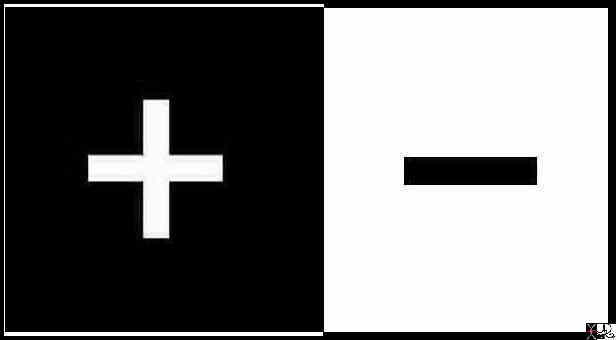 Positive and Negative Positive and Negative |
| 84154b04.698 positive and negative extreme states black and white Davidoff art Davidoff MD |
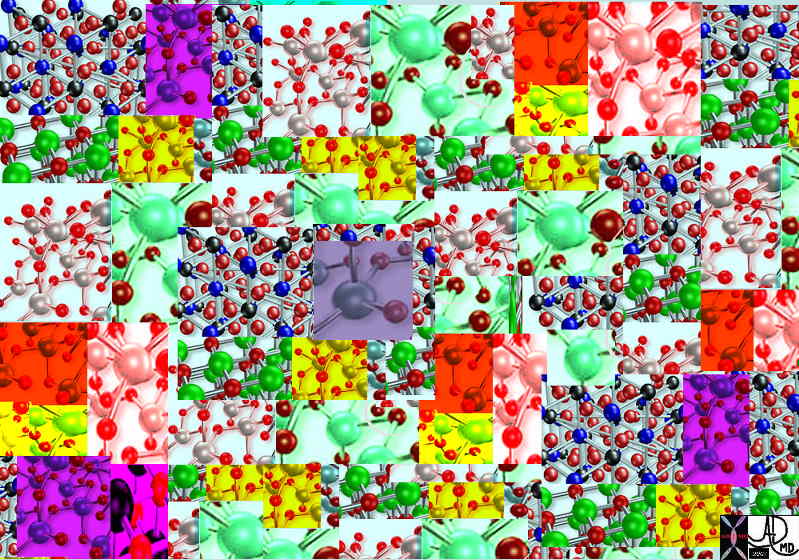 Bonds Links Connections Atoms Molecules Bonds Links Connections Atoms Molecules |
| 70983.800 molecules atoms bonds links connections relations collage Davidoff art |
Having risen above the atomic and molecular levels one may next consider the cell, which is the fundamental unit of biological structures. Incidentally, it is also the site of myriad linkages, as connections between organelles like the endoplasmic reticulum and Golgi apparatus allow the cell’s system of transport and packaging to take form. In this way, one sees the first example of links and connections as critical for establishing structures of particular function within an organism.
 Intestinal Epithelial Cell – Golgi Apparatus and Intercellular Borders Intestinal Epithelial Cell – Golgi Apparatus and Intercellular Borders |
| 71798b13b03.800 cell endoplasmic reticulum mitochondria fat droplet absorbtion by microvilli processing cisterna interdigitaion of cells pinocytic vesicle intercellular space function absorbtion Davidoff art Davidoff MD |
While such intracellular connections are of great import, the linkages between individual cells must also be considered, as they allow for the formation of tissues and organs with distinct functional characteristics. Two examples of such connections are shown below.
 Cells are Linked by Reticulin Connective Tissue and Conduit Vessels Nerves and Chemicals Cells are Linked by Reticulin Connective Tissue and Conduit Vessels Nerves and Chemicals |
| 13236 liver hepatocyte liver cords sinusoids cytoplasmic granules connective tissue reticulin histopathology histology Courtesy Barbara Banner MD |
 Cardiac Syncitium Cardiac Syncitium |
| A drawing of the histology of the myofibrils of the heart showing how they ae connected and related as a continuum enabling a coordinated contraction pattern. Courtesy Ashley Davidoff MD. 32907 code cardiac heart muscle syncitium histology Davidoff art |
The manifestation of these intercellular associations is the development of progressively greater, more complex structures, as tissues interact to form distinct organs. The image below, for instance, depicts this type of interaction, as solid plates of bone are joined to each other at the coronal and sagittal sutures, allowing the skull to take form.
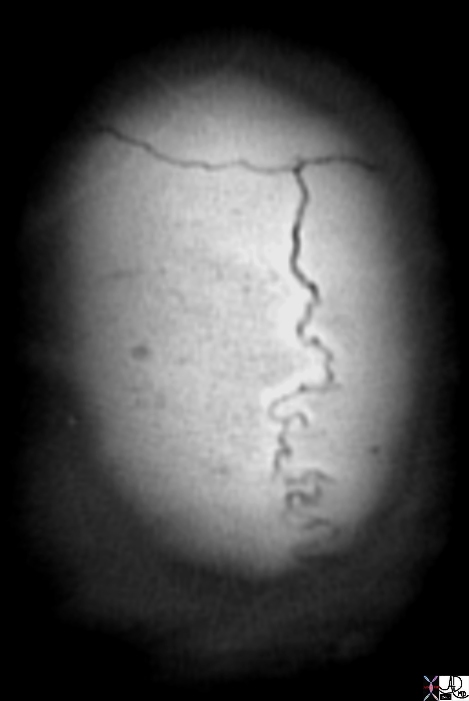 Coronal and Sagittal Sutures of the Skull Coronal and Sagittal Sutures of the Skull |
| 70333 brain bone skull sutures frontal bone coronal suture sagittal suture bregma parietal bone links connections bond joints CTscan Davidoff MD |
The highly varied array of organs within the body allows for great multiplicity of function within an organism. However, the value of such diversity would be negated without the system of linkages that allows the organs to communicate with one another. This system consists of both structural connections, such as the network of tubules shown below, and chemical links established and maintained by the endocrine and exocrine systems of the body.
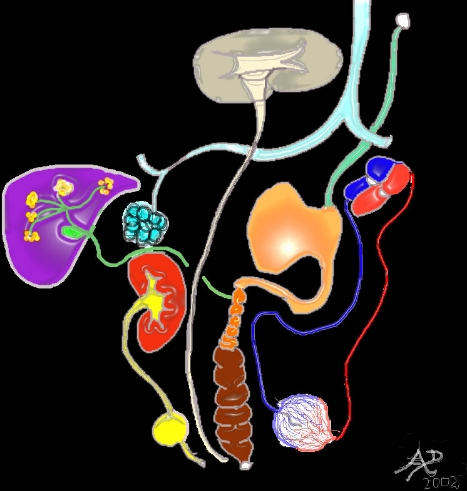 Tubular Links between the Organs Tubular Links between the Organs |
| 32369 tube colon small bowel lung bronchus bronchi esophagus stomach large bowel bile duct ureter brain liver urinary bladder heart cardiac artery arteries arterial system veins venous system tube principles Davidoff art Courtesy Ashley Davidoff MD |
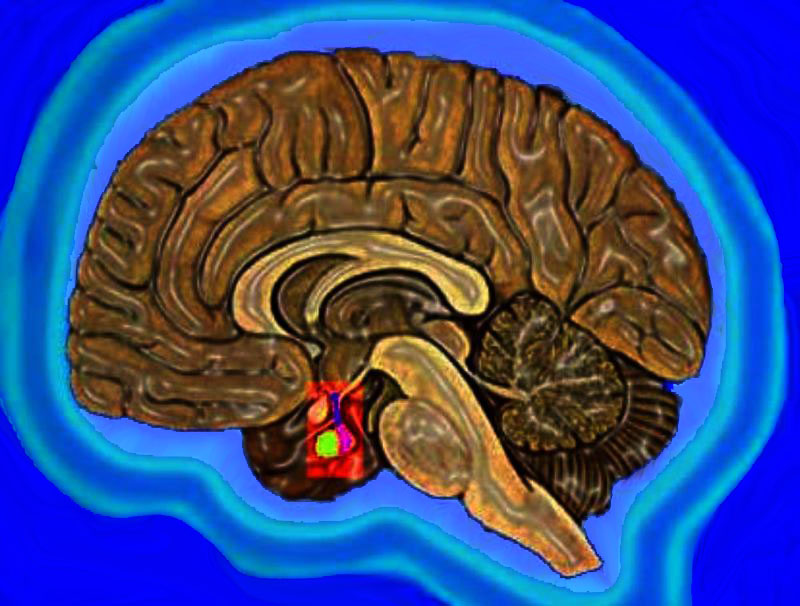 Pituitary Gland – Connecting the Body through Hormones Pituitary Gland – Connecting the Body through Hormones |
| 14798 04.800 brain pituitary anatomy normal Davidoff art |
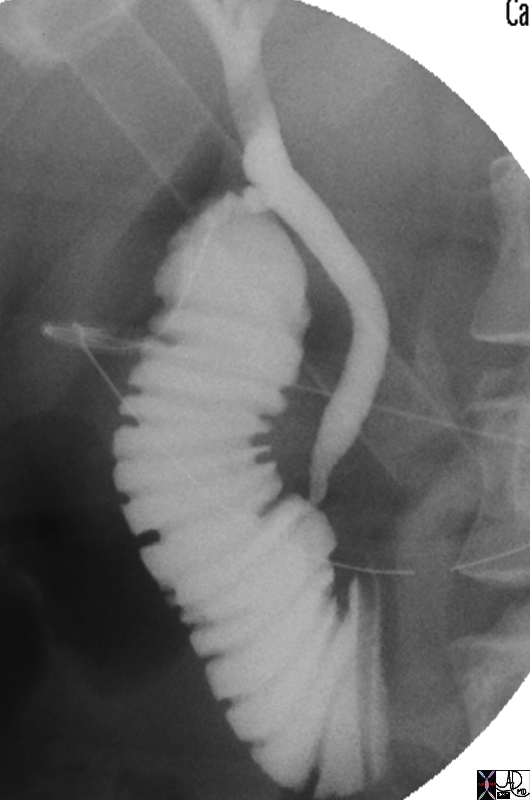 Junction of Bile Duct with Duodenum at the Papilla Junction of Bile Duct with Duodenum at the Papilla |
| 71731.800 bile duct duodenum papilla valvulae conniventes small bowel common bile duct CBD CHD common hepatic duct links connections tubes cystic duct remnant normal biology anatomy intra |
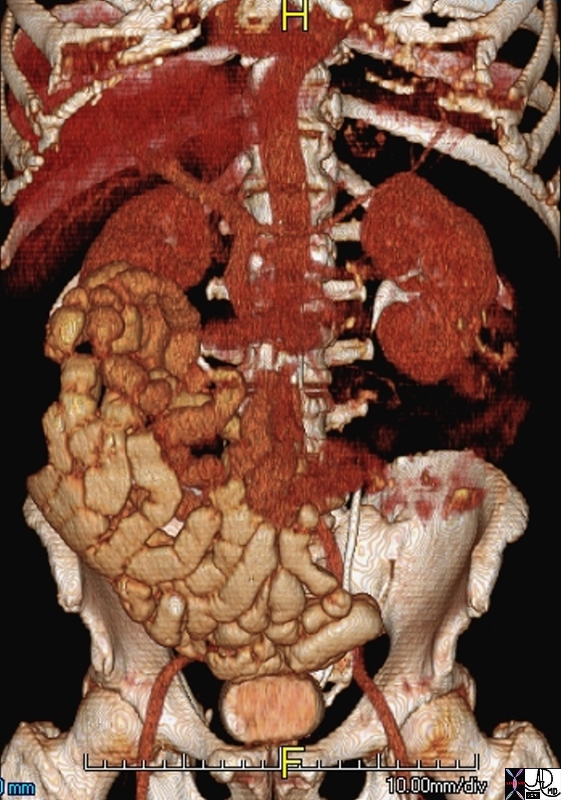
Systems of the Abdomen |
| 60641 abdomen small bowel ileum jejenum portal vein normal anatomy TCV applied biology volume rendering CTscan Davidoff MD |
In this way, by visualizing the linking of atoms to form molecules to form compounds to form cells, tissues, organs, and the human body, one realizes the potency of links and connections as embodiments of the “units to unity” concept. Furthermore, they are the means by which human relationships form, as one organism interacts with many others to form couples, families, and communities. The theme may even be extended to the structure of our cities and towns, as elaborate networks of roads are established to facilitate the human interactions described above. Links and connections, then, represent a concept at the very heart of our existence.
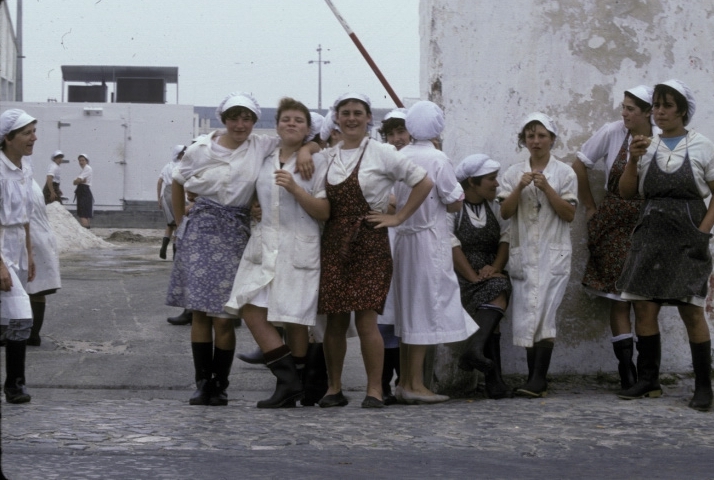
Community |
| 56889 fish processors in Portugal young women uniform gum boots TCV the common Vein Davidoff photography Davidoff MD |

Highways Byways and Waterways for the City |
|
Note the Bunker Hill monument in the far right of the image- Importance of linking to our heritage and history 83557.800 highways waterways reservoirs storage stations factories homes transport systems bus cars Davidoff photography |
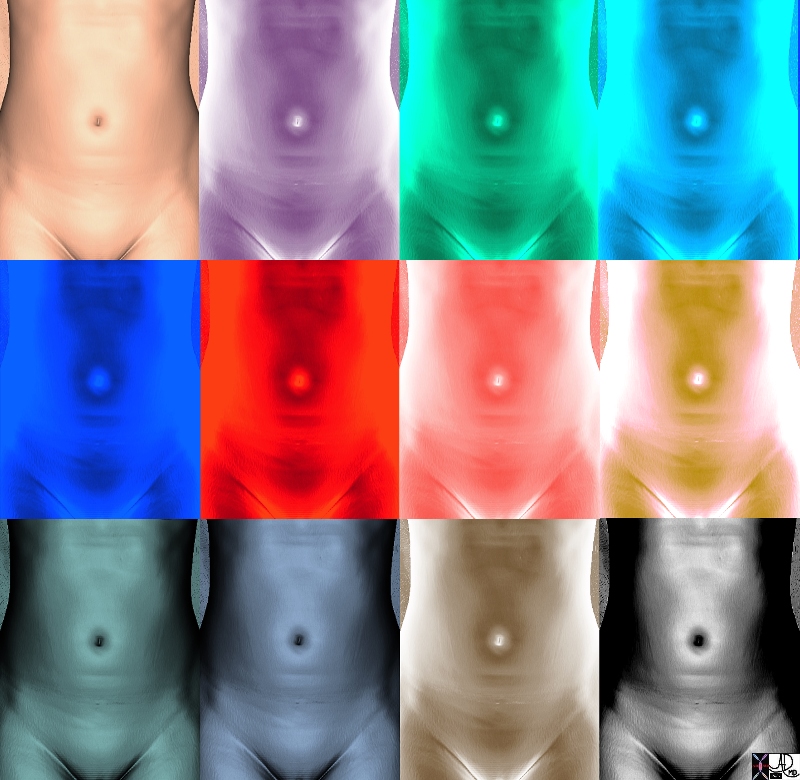
Prior Link to all Life |
| 49703b17c01.801 body in 12 moods umbilicus abdomen a day in the life a year in the life Davidoff art |

Connections through the Roots |
| This group of pine trees share space sun and water. They share the seasons. Usually not seen and not heard are their roots which share sustenance from the earth and they health and growth is deppendant on this as well. The roots of the first two trees are intermittantly connected and linked as can be seen by the first pair of trees whose roots can be seen growing toward each other. they are of course in competition but they have learned to live share, and combine with other trees to form a forest which in the end is bigger and more powewrful than the individual parts.
Mason Rice School park trees links and connections share bond roots sun environment Davidoff photography Davidoff art Copyright 2009 All rights reserved 91016p.8s |
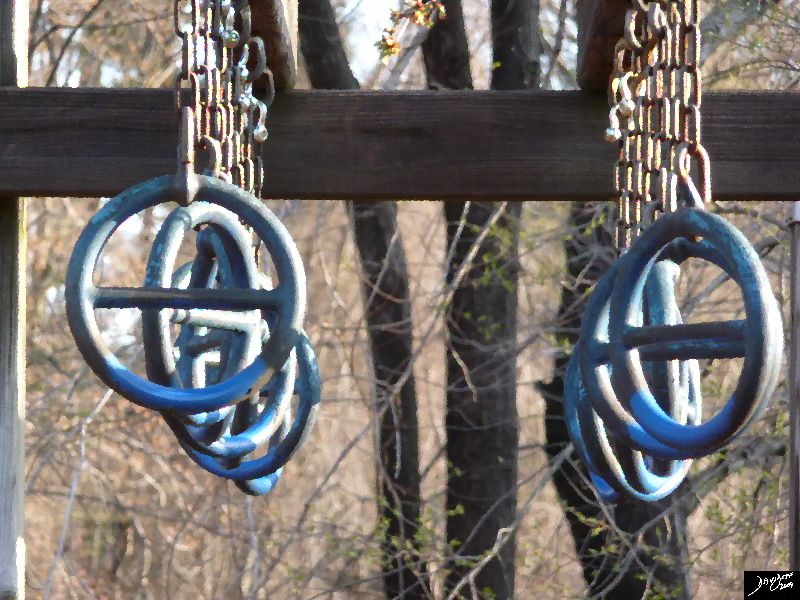
Links in the Chain |
| The monkey bars are connected to a chain and the chain is connected top a wooden frame. In this case the functionality of the toy is dependant on the strength of the connections and bonds. The treeand the bushes in the background are of course depndant on the their roots to connect them to the ground and nutrition and the branches are connected to the atmosphere and the sun.
links and connnections monkey bars units to unity sphere half two halves make the whole Davidoff photography Davidoff art copyright 2009 all rights reserved 90997p.8k.8s |